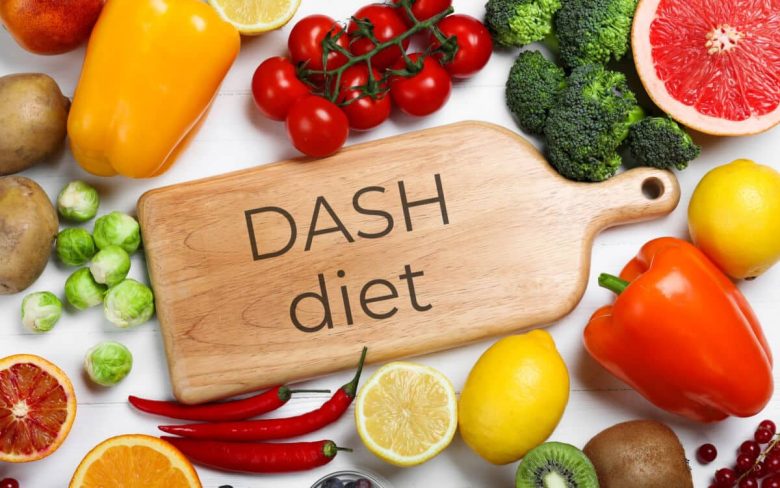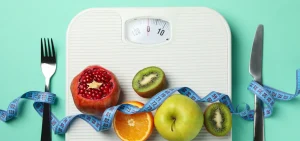Hypertension, or high blood pressure, is a prevalent global issue. The increasing concern about the consequences of unregulated hypertension poses a more urgent need for effective and manageable solutions. The DASH diet aims to fulfill this purpose. It stands for Dietary Approaches to Stop Hypertension, and this meal plan is well known for its natural methods in alleviating high blood pressure.
And there is more to it: the DASH diet also improves overall health, which is why it is praised by many nutritionists and health specialists. If you are wondering how this diet functions and how to adopt it, keep reading. By the end of this article, you will understand why the DASH diet might help you secure a healthier life.
Comprehending the Dynamics of Hypertension:
Hypertension sets in when blood pressure remains elevated above normal levels over a prolonged duration. If left unchecked, it has the potential to cause heart disease and stroke. Factors such as family history, anxiety, genetics, and poor lifestyle choices such as immobility are known to promote hypertension, with diet being the most influential factor. Food and drink have a strong bearing on blood pressure values. The DASH diet has been designed to assist with this and has been shown to control and prevent hypertension through the incorporation of wholesome, nutrient-dense foods into the diet.
Fundamental Aspects Underlying the DASH Diet:
The DASH diet encourages the consumption of calorie-dense foods while at the same time balancing dietary needs and restrictions. The principal purpose is to reduce sodium intake while increasing the consumption of potassium, calcium, and magnesium, the three nutrients known to lower blood pressure. Unlike many restrictive diets, the DASH plan, aka the mentored increase aerobic capacity, physically move restricted calorie plan cuts and eliminates entire food groups. Rather, it warmly promotes inclusiveness. Its core feature is flexibility, which makes it convenient for all persons. From health enthusiasts to beginner wellness seekers, emulating the DASH principles is easy, actionable, and worthwhile.
Foods to Include in the DASH Diet:
The DASH diet encourages a greater consumption of whole and fresh foods. It strongly promotes the use of fruits and vegetables since they are sources of potassium and antioxidants. Other sources of energy and fiber are whole grains like quinoa, brown rice, and oats. These foods also improve digestion and heart health. Other recommended sources of protein include skinless poultry, fish, beans, and tofu. These foods help maintain muscle mass while avoiding excess unhealthy fats. Other calcium, magnesium, and fat sources required for overall health include nuts, seeds, and low-fat dairy products.
Foods to Limit on the DASH Diet:
The DASH diet is not overly restrictive, but it does suggest cutting down on some foods for heart health. The first concern is always sodium intake, so packaged and processed foods that are high in salt should be avoided. Sugary foods like candies, sodas, and baked goods are also best avoided because they provide no nutrition. Other sugars to be avoided include saturated fats, trans fats, red meats, full-fat dairy products, and fried foods. With proper control of these foods, balanced nutrition and better health can be achieved.
Advantages Aside from Blood Pressure:
As noted, the DASH diet offers an extensive range of benefits that go beyond compromising blood pressure, making it favorable for overall health. The DASH diet’s focus on whole and nutrient-dense foods supports weight management, allowing one to easily achieve or maintain a healthy BMI. Reported changes in energy levels, improvement in digestion due to higher fiber intake, and decreased saturated fats and cholesterol also reduce the risk of heart disease. Even those with normal blood pressure reap the benefits, as the DASH approach serves as a pillar for sustained health and longevity.
Adopting the DASH Diet:
While the DASH diet may appear challenging at first glance, implementing it is much less complicated than one may think. The first step entails gradually adding more fruits and vegetables to your meals, aiming to take up around half the plate. Gradually replace refined grains with whole-based options like brown rice or whole-grain bread. For those who enjoy salty snacks, it is best to try switching to talc-free nuts or air-popped popcorn. Also, remember to reduce salt usage when cooking. Instead, reach out to spices, fresh lemon juices, or herbs for flavor enhancement without the extra sodium. Remember, making small changes consistently leads to large results.
DASH Diet Sample Daily Meal Plan:
This is an example day while following the DASH diet. For breakfast, have oatmeal topped with fresh fruits and a small handful of nuts. For lunch, have a turkey and avocado wrap in a whole-grain tortilla and a salad with mixed leafy greens and other vegetables. Think about having grilled salmon for dinner with quinoa and steamed broccoli. Between meals, you can satisfy your hunger with snacks. A banana, some baby carrots with hummus, or a handful of unsalted almonds are all great choices. This will enable you to enjoy a wide range of foods without getting bored.
Advice for Following the DASH Diet:
Following the DASH diet with success requires prior planning, being attentive, and having the motivation to follow. Start by setting a plan for your meals and snacks. This will ensure you have DASH-approved meal options readily available. Pay attention to recommended sodium levels and nutrition labels, choosing low-sodium versions when available. If eating out, look for heart-healthy options on the menu, and ask for dressings and sauces on the side. Make a habit of tinkering with new recipes to keep yourself interested, and always keep your kitchen filled with fresh, unprocessed foods. Most importantly, reward efforts—no matter how small—and appreciate the positive impacts on your health as you follow the plan.
Potential Problems and Suggestions:
While the DASH diet plans for ease, some individuals undoubtedly will face challenges. Adjusting to a lower sodium intake can be especially difficult for those used to a diet rich in salt. The incorporation of herbs, spices, and citrus zest can smoothen this transition. Processed convenience foods become tempting with a busy schedule, but stress and time can be saved by meal prepping once or twice during the week. For anyone facing stalled progress, considering portion sizes or hidden sodium sources may be helpful. Remember that overcoming these hurdles is crucial to ensuring long-term success.
Improving Lifestyle Habits Through The DASH Diet
DASH is more than just a dietary plan; it can certainly change how one feels and moves by setting an empowering diet and lifestyle goal. It can reduce high blood pressure and hypertension, among many other benefits, and is just one of the changes expected by adopting a DASH-compliant lifestyle. You can adapt it to your liking, hence making it even more desirable. So, why not set out to work at a better you, starting with incorporating some of the principles of DASH?
FAQs:
1. What Does The Term DASH Represent
DASH stands for Dietary Approaches to Stop Hypertension. It is a diet plan with an emphasis on healthy dietary steps to prevent or manage hypertension.
2. How quickly can one achieve the desired results when following the DASH diet?
Most dieters report some improvement with their blood pressure control within two weeks, although results vary depending on compliance to the diet as well as other health factors.
3. Can weight loss be achieved through the DASH diet?
The DASH diet is effective, however, only when combined with caloric restriction and exercise. The diet’s emphasis on whole and nutrient-rich foods also assists in lowering calories without any conscious effort.
4. Is it possible to follow the DASH diet without having high blood pressure?
Yes! The DASH diet is designed to support one’s general health and can be adopted by any individual intending to follow a well-balanced and healthy dietary regimen. Consider it a preventive health measure.
5. What can be done to achieve a lower sodium intake while adhering to DASH guidelines?
To limit sodium intake, one should avoid all packaged and processed foods and use fresh foods, along with checking nutrition labels. Salt can be substituted with herbs and spices to improve taste without increasing sodium.




